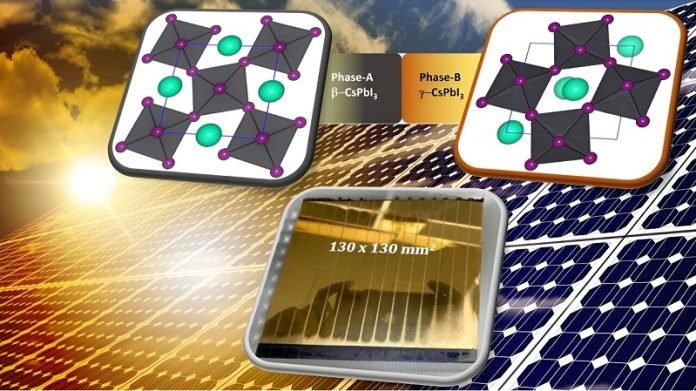
Solar energy is one of the most promising ways to power our homes and businesses.
But, making efficient solar cells has always been a challenge.
However, a group of international scientists, including some from Penn State, has come up with an exciting development that can change the way we look at solar energy.
What have they done?
They’ve developed a new method to create solar cells that are not only more efficient but also last longer.
These are called perovskite solar cells. Traditional solar cells are made from silicon, but these new ones use a different material which is cheaper and more environment-friendly to produce.
There’s a slight hiccup, though. The materials used in these new cells are sensitive to things like moisture, air, and heat.
This means that they might not last as long if exposed to these conditions. But the scientists found a way around this.
They used a material called cesium lead iodide. This material is better at handling environmental factors but has its own set of challenges. It can exist in different forms, and some of these forms aren’t great for solar cells.
To solve this, the scientists mixed two good forms of this material, creating a sort of ‘layered’ structure.
This stopped the material from turning into the not-so-good form. Nelson Dzade, a professor from Penn State and one of the study’s authors, explained it beautifully: “Think of it as stacking different layers in a sandwich, where each layer has its own special job. Together, they make the perfect bite!”
The result? They made a solar cell with a fantastic 21.59% efficiency in converting sunlight to electricity. In simpler terms, it means that about 21.59% of the sunlight hitting these solar cells can be turned into usable power.
This is among the best rates for such an approach. And the best part? These solar cells stayed efficient even after 200 hours, retaining more than 90% of their initial power. When they made a bigger version of this solar cell, it still showed an impressive efficiency of 18.43%.
How did they do it? Dzade and his team studied the structure of their new solar cell very closely, understanding how the different layers worked together. Meanwhile, their partners in South Korea came up with a special method to make these cells.
They used two different techniques to deposit the layers and even added some special ingredients to make the cells better.
This breakthrough has huge potential. Dzade believes that this new way of making solar cells can be applied to other materials too. The next steps? They want to make these cells even tougher and as big as the regular solar panels we see on rooftops.
In conclusion, there’s a lot of excitement in the air. Dzade sums it up with a hopeful note, “With this new method, we’re looking at a future where these solar cells might go beyond 25% efficiency. And once that happens, we’re talking about a game-changer in the world of solar energy.”
So, the next time you see a solar panel on a roof or in a field, remember that scientists are working hard to make them even better, bringing us closer to a brighter, greener future!
Follow us on Twitter for more articles about this topic.



